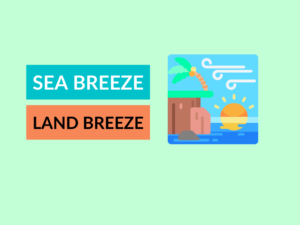Introduction
Have you ever wondered about the difference between a gulf and a bay? These two terms are often used interchangeably, but they actually have distinct characteristics. In this article, we will explore what a gulf and a bay are, provide examples of each, discuss their uses, and highlight the key differences between them. So, let’s dive in!
What is a Gulf?
A gulf is a large area of seawater that is partially enclosed by land. It is typically larger and more open than a bay. Gulfs are usually formed when a landmass extends into the sea, creating a concave shape. They can also form due to the movements of tectonic plates. Famous examples of gulfs include the Gulf of Mexico, the Persian Gulf, and the Gulf of Guinea.
Uses of Gulfs
Gulfs have significant economic and environmental importance. They serve as important shipping routes, allowing the transportation of goods between different countries. Many gulfs are also rich in natural resources, such as oil and gas, which are extracted for commercial purposes. Additionally, gulfs provide habitats for a wide variety of marine species, supporting fishing and tourism industries.
What is a Bay?
A bay is a body of water that is partially enclosed by land. It is typically smaller and more sheltered than a gulf. Bays are often formed through erosion by waves and currents or by the flooding of river valleys. Some well-known bays include the San Francisco Bay, the Bay of Bengal, and the Bay of Fundy.
Uses of Bays
Similar to gulfs, bays have various uses. They are commonly utilized as natural harbors, providing safe anchorage for boats and ships. Bays also offer recreational opportunities, such as swimming, boating, and fishing. Additionally, many bays have important ecological value, serving as nurseries for marine life and supporting diverse ecosystems.
Differences between Gulfs and Bays
To better understand the distinctions between gulfs and bays, let’s take a look at some key differences in the table below:
| Difference Area | Gulf | Bay |
|---|---|---|
| Size | Generally larger | Usually smaller |
| Shape | Concave | Varies (concave, straight, or convex) |
| Exposure to open sea | More open | More sheltered |
| Formation | Extension of land or tectonic movements | Erosion or river flooding |
| Examples | Gulf of Mexico, Persian Gulf, Gulf of Guinea | San Francisco Bay, Bay of Bengal, Bay of Fundy |
| Commercial importance | Major shipping routes, rich in natural resources | Natural harbors, support fishing industries |
| Environmental significance | Diverse marine ecosystems, habitats for marine species | Nurseries for marine life, diverse ecosystems |
Conclusion
In summary, gulfs and bays are both partially enclosed bodies of water, but they differ in terms of size, shape, exposure to the open sea, formation, examples, and uses. Gulfs tend to be larger, more open, and formed through the extension of land or tectonic movements. They are often major shipping routes and rich in natural resources. Bays, on the other hand, are generally smaller, more sheltered, and formed by erosion or river flooding. They serve as natural harbors and support diverse ecosystems.
Knowledge Check: Quiz
1. What is the main difference between gulfs and bays in terms of size?
2. How are gulfs and bays formed?
3. Provide an example of a gulf.
4. What are the primary uses of bays?
5. Which body of water is typically more sheltered, a gulf, or a bay?
6. Name a bay that is famous for its tidal range.
7. What kind of movement can lead to the formation of a gulf?
8. Which body of water is known for its importance in the oil and gas industry?
9. Which type of water body supports diverse marine ecosystems?
10. True or False: Bays are generally larger than gulfs.
Answers:
1. Gulfs are generally larger than bays.
2. Gulfs are formed through the extension of land or tectonic movements, while bays are formed by erosion or river flooding.
3. Gulf of Mexico.
4. Bays are used as natural harbors and support diverse ecosystems.
5. Bays are typically more sheltered than gulfs.
6. Bay of Fundy.
7. The extension of land or tectonic movements.
8. Gulf of Mexico.
9. Gulfs and bays can both support diverse marine ecosystems.
10. False. Bays are generally smaller than gulfs.
Related Topics
If you found the differences between gulfs and bays fascinating, you might be interested in exploring other related topics, such as:
– Difference between ocean and sea
– Types of coastal landforms
– Importance of marine conservation
– Understanding tides and their causes
– Factors affecting coastal erosion
By delving into these related topics, you can broaden your knowledge and deepen your understanding of the Earth’s water bodies and coastal environments. Happy learning!


